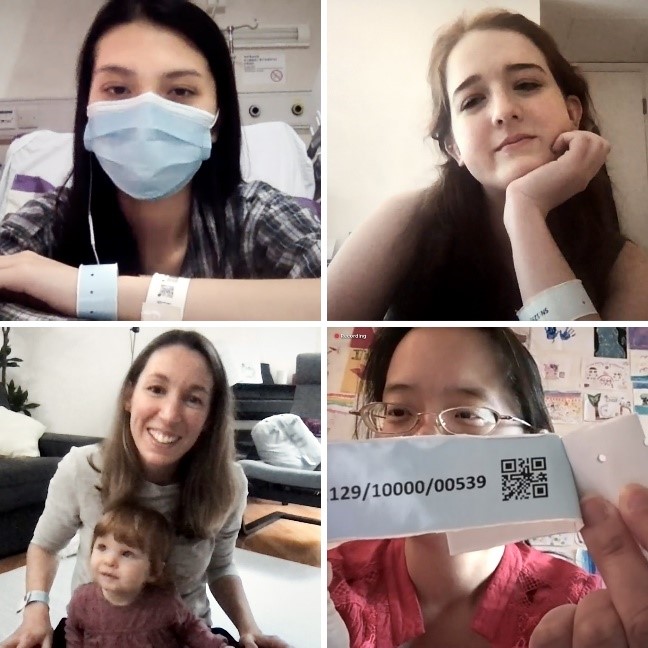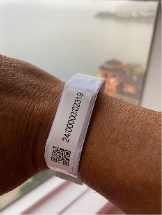COVID Chat series 2020
Amidst COVID, the Centre took part in ‘Chat’ series on the following topics exploring the impact of COVID in the industry. Dr. Dorothy Chan, Head of Centre for Logistics and Transport organized ‘Chat’ sessions during COVID in 2020 with Women in Logistics and Transport (WiLAT) in the Chartered Institute of Logistics and Transport (CILT) such that the industry could respond to the challenges by learning from each other.
- Impact on Human Behavior and Society (March 26, 2020)
- Coping strategies for the home bound (April 2, 2020)
- Technologies enables social distancing (April 9, 2020)
- Farm to store logistics impact (April 23, 2020)
- PPE and Hygiene Best Practice (April 30, 2020)
- Post COVID-19 Passenger Transport for a safe return (May 21, 2020)
- Re-opening of airports and Preparation (May 28, 2020)
- Port Re-opening and Maritime Industry (June 4, 2020)
The chat sessions were organized by Women in Logistics and Transport, a forum under the Chartered Institute of Logistics and Transport.
CHAT ON COVID-19: Technologies enables social distancing
Thursday, 9 April 2020
The serious question of lock down, quarantine and social distancing now experienced in most countries and how we are managing with the help of technology.
The Ports in Colombo have almost 80 % of office staff working from home. The change in working mode requires a supporting IT infrastructure and collaborative platforms to enable planners and finance department to work from home. Within companies, there is a paradigm shift from requiring people to come to office to manage work at home instead. It was observed that productivity increases as staff is willing to work longer hours at home.
From a port operation point of view, electronic documentation and the process of going through customs is a stumbling block and as we may have to be dealing with a pandemic situation which could last for a while, the quantum shift in how we work and how the public sector work could come about even after Covid-19.
Cybersecurity and remote work from home
While we are shifting to on-line operation, using Zoom for meetings, teaching and conferences, a valid and serious question was raised on cyber security. Edward Lau and Zainab Hameed, both experts in this area shared their observations. IT is supporting business continuity for now and on a scale never seen before and hence security has become even more important. But what is our priority: protection of users is seen as most important as we are most vulnerable and realizing that nothing can be fully secured even if you encrypt with password protection.
There is a proliferation of cybersecurity attack vectors during Covid-19 including phishing emails, malicious applications, bad domains and fake websites and ransomware. While these are nothing new, work from home potentially increases this risk.
There is pressure to ensure that business is conducted smoothly and for the business community, it is important to plan ahead to keep things going. During remote work situation, we should attempt to use official infrastructure via VPN as far as possible, have in place an effective antivirus application protection and there should be general awareness that personal lap top would require enhance security measures for protection and not to expose your data to anyone. Remote workers are most at risk and this is the time to retrain employees to adjust to a remote work first and remote work heavy situation.
In short, organizations need a Covid-19 IT security preparedness plan and a response plan. It can begin with the user level, what data you are willing to share, what topics do remote users need to receive, what are the available delivery mechanisms and the types of content that will be delivered through each. You may not need to start from scratch but leverage on your current security framework, processes and mechanisms and adapt them to cope with the new way of remote working.
With gaining popularity on Zoom and recent reports on security issues and cyber harassment that some calls have been hijacked by unidentified individuals and interrupted by pornographic and/or hate images, some schools and universities have hence stopped using Zoom for on-line teaching. There are other video-conferencing software and companies have to choose one or several that meet their normal business and the more secure type of transaction. GoToMeeting that WiLAT is using is a standalone web conferencing service with provides audio and video conferencing as well as screen sharing. CyberLink offers video conferencing solution, its U meeting which is entirely web-based, BlueJeans is supported by cloud-based video conferencing platform and Google Hangouts Meet is developed specifically for business needs and can cater for a large number of users at once and Lifesize which is designed for small teams.
Other enabling technologies
As person-to-person contact is reduced to a minimum, a new transportation and delivery system has emerged to serve daily deliveries. “Grab” is an example expanding from providing dial-hailing to offer on-line deliveries. Since the outbreak, online retail sales have increased exponentially, and largest retailers are struggling to keep up with the unprecedented consumer demand. Business alliance has also emerged between Fresh Mart and Grab and during Covid-19, the consumer demand pattern has changed from clothing, bags to health items and households’ products.
In Ireland where households are more spread out, deliveries are encountering problems and different countries are seeking their own solutions to meet the daily necessities and maintain community health.
A video (https://www.youtube.com/watch?v=ejGdWeXKlVc) is shared on how to upgrade to “Wi-Fi 6” as there is an increasing need to enlarge the capacity of our Wi-Fi support at home. The video showed that by acquiring and positioning the Wifi-6 routers to setup a “Wi-Fi mesh” at home would improve the download and upload speed, avoid blind spots, and support multiple devices operation simultaneously instead of queuing for transmission. The information is helpful for those who is considering setting up additional routers at home and in particular for countries which have difficulties in linking up and with remote working and home quarantine, this has imposed hardships on these families.
On the health side, people put on quarantine in Hong Kong is provided with a wrist band which is a blue tooth device connected to the mobile phone to monitor the location of the persons put under quarantine.
Another video (https://www.youtube.com/watch?v=ejGdWeXKlVc) was shared on a Korean technology KAIST which has developed washable and reusable Nano Fibre Filtered Face Masks produced by an insulation block electrospinning process making it reusable after washing for about 20 times. This reusable nano-filtered face mask could help to relieve the challenges arising from the supply shortage of face masks. The Hong Kong Science Park has a similar product of reusable face mask with a replaceable filter.
Information (https://www.facebook.com/SJEcho/videos/vb.23326922816/609838309745411/?t ype=2&theater) was shared on Grocery chain stores in Malaysia which require customers to walk through a tunnel with emit disinfecting mist and robots are also used for sanitizing work. Robot ‘Peter’ is carrying out such duties in Singapore airport.
Videos (https://www.youtube.com/watch?v=_XF9HnUd_Ig) of airlines using ultra-violet C (UVC) lamps to clean seats on planes and tiny areas that people cannot reach is also shared.
Dorothy Chan
WiLAT Global Chairperson
Head, Centre for Logistics and Transport, HKU SPACE







